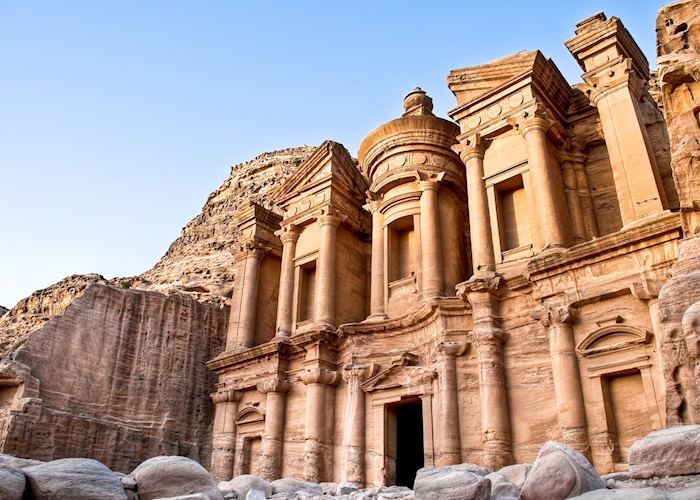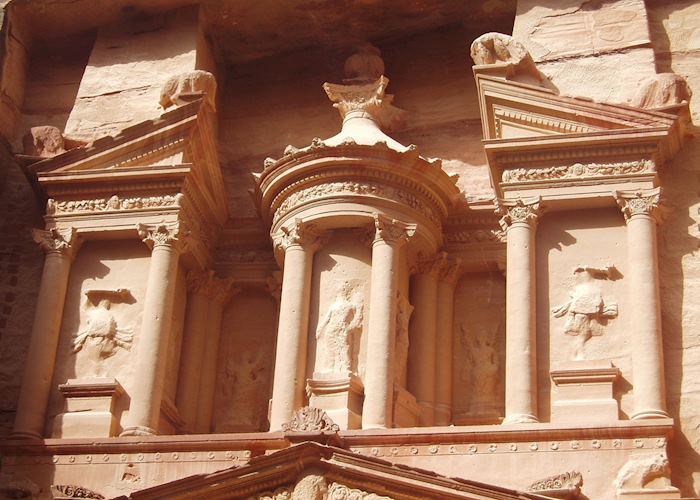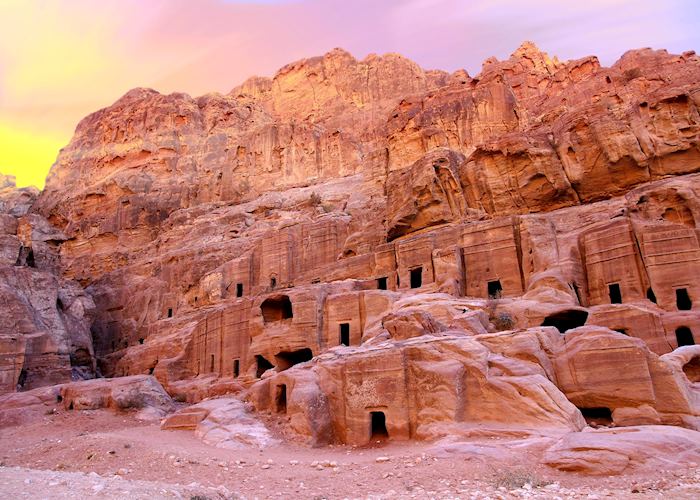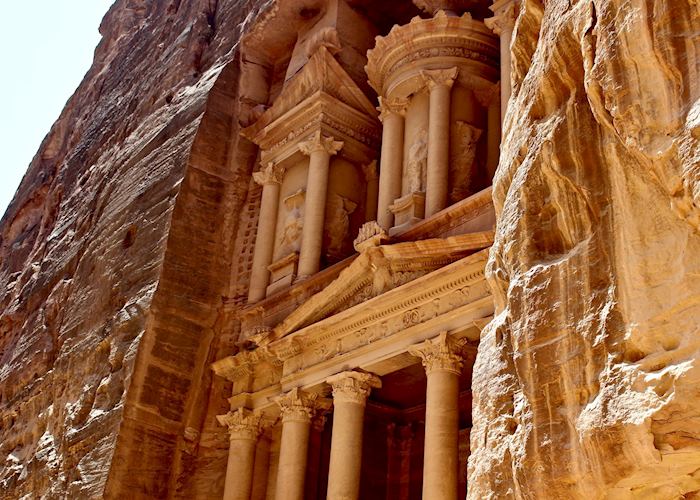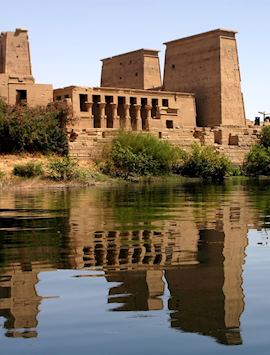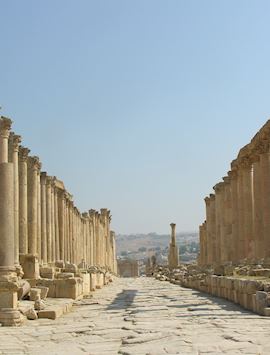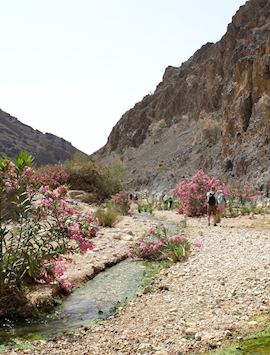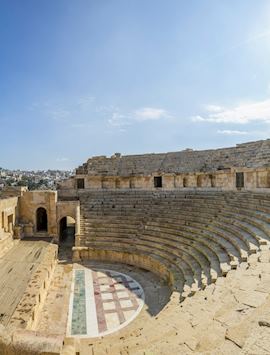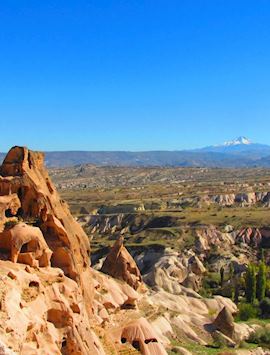
The tour begins with the walk down from the site entrance to the beginning of the Siq. This path is flanked with typical rock-cut tombs that are a very small precursor of the drama to come. The most impressive of these preliminary tombs is the Obelisk tomb. This is actually two tombs one on top of the other, the uppermost being capped with four obelisks, and the lower displaying the typical classically-inspired façade of Nabataean tombs.
The Siq itself is one of the major highlights of any visit to Petra. Stretching for just over a kilometer, the narrow canyon is never more than about 10 meters from one sheer wall to the other. The rock is beautiful, layered bands of rich colors from deep reds through to golden yellows. Channels, built by the Nabataeans, are still visible about a meter off the canyon floor, and were used to convey water into the city. Along the course of the Siq are numerous niches and altars — there is a theory that says the Siq's primary function was for worship, and the soaring rock, peaceful atmosphere and awe-inspiring surroundings do evoke similar feelings to a great cathedral.
The defining moment of your first visit to Petra is going to be your first glimpse of The Treasury tomb (Al-Khazneh) through the end of the Siq. This vast tomb got its name because of a legend that said the king buried in it had secreted his treasure in the urn atop the tomb. This explains the pock-marks on the urn — successive grave robbers attempting to shatter the urn with their bullets and gain the treasure inside. Your guide will spend some time explaining the façade of the tomb: the symbolism, the means of construction, and the importance of tombs to the Nabataeans. This explanation will stand you in good stead through the rest of the city, because the same motifs and designs are repeated throughout the site.
Moving on into the city, you pass the Street of Facades, home to further tall, imposing tomb fronts, and wander through some of the smaller tombs, carved through the most amazingly colored rock, with deep purple strata. You pass the Roman theater, partly carved from the rock and turn the corner into the Roman section of the city. The remains of the colonnaded street are decorated by various temples and flanked by the Triumphal Arch and the Nymphaeum.
The Roman colonnaded street comes to an end in the sacred courtyard of the Qasr El Bint temple. This is a monumental temple, with the huge walls still standing and the bases of the four enormous pillars that formed the temple portico still in place. Qasr El Bint sits nestled under the sheer face of the rugged sandstone hills that enclose Petra. Nearby are a couple of restaurants and the pathway that leads up toward the Monastery, and it is here that your guide will leave you and you are now free to go back over the city and explore at your leisure.
who's been there
-
617-223-4521617-223-4765
- Make an inquiry
Photos of Petra city tour
Experience it for yourself
You can enjoy this activity as part of the suggested tours below, or we can weave it into a trip shaped entirely around you.
